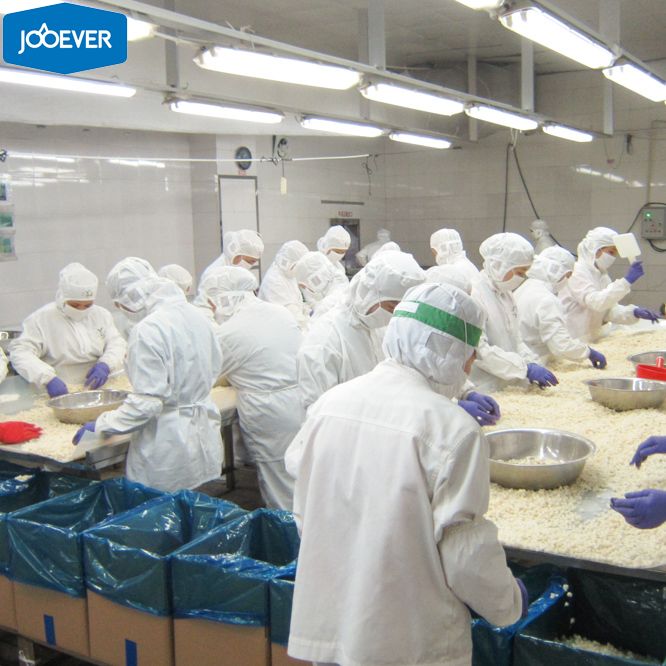If you’ve ever opened your freezer to a full stock of frozen meals, snacks, and vegetables, you’ve experienced the result of an almost $300 billion industry that transformed the way we eat. But the story of frozen food is not just about convenience; it’s about one man’s vision that turned a poor reputation into a revolution. The idea behind frozen food, pioneered by Clarence Birdseye, has forever changed our food culture.

The Early Days: A Bland, Frozen Past
Before frozen food became a staple of modern diets, American cuisine was far from exciting. Meals were often basic, with lots of meat and potatoes, and grocery stores were small, mom-and-pop operations where customers picked items off shelves, and workers packed them. Food was kept cold in iceboxes, but they were far from effective at freezing food.
Frozen food, in fact, had a terrible reputation. The freezing process was slow, causing large ice crystals to form that ruined the taste and texture of the food. Most people avoided frozen food because it lacked quality, and refrigeration technology had not yet caught up to make it feasible for large-scale consumption.
Clarence Birdseye: The Man Who Made It Happen
Then came Clarence Birdseye. An inventor with over 100 patents, Birdseye became fascinated by food preservation techniques. While working in Labrador, Canada, he observed Inuit fishermen freezing fish in the freezing temperatures of the outdoors. The fish froze so quickly that they retained their texture and flavor. This was the breakthrough that Birdseye needed.
Birdseye went on to engineer a machine that could replicate this fast-freezing process. His machine could freeze food quickly between two extremely cold metal plates, preventing ice crystals from ruining the food. Later, the machine was modified to use belts for greater efficiency, freezing food at temperatures as low as 50 degrees below zero.
Birdseye didn’t just invent the process; he created a system that could mechanize frozen food production. By 1932, The New York Times called it a “scientific miracle.” Birdseye’s new food, branded “frosted food,” revolutionized the frozen food industry by offering a much higher quality product than anything that had come before.
The Struggle for Acceptance
Despite Birdseye’s success in perfecting the freezing process, he faced a major hurdle: No one had a freezer. Electric refrigerators were a new concept in the 1930s, and most homes didn’t yet have them. The problem wasn’t just with consumers, but also with retailers. Supermarkets lacked the necessary freezers to store frozen foods properly, and many were skeptical about this new way of preserving food.
In 1929, Birdseye sold his patents and company to Postum (which later became General Foods) for $23.5 million, equivalent to over $350 million today. Despite this, Birdseye remained with the company as a consultant, determined to get frozen food into homes.
Birdseye’s big solution was to create not only frozen food but also the infrastructure needed to keep it cold. His company began leasing freezers and trucks to retailers, allowing them to store frozen food properly and ensuring that it wouldn’t thaw. By 1937, 2,000 stores were selling Birds Eye frozen food.
The Rise of Frozen Food
Birdseye marketed his frozen food products by emphasizing their convenience and freshness. The company advertised frozen peas as “gloriously green as any you will see next summer.” But it wasn’t just about fresh vegetables. The rise of frozen food was part of a larger cultural shift in the 1950s and 1960s when American consumers were finally able to afford the convenience of processed foods.
The “Golden Age of Food Processing” saw the introduction of products like frozen OJ, TV dinners, and frozen pizzas. Frozen food sales grew dramatically—from $496 million in the 1940s to nearly $2 billion by the 1950s. Brands like Eggo, Hungry-Man, and Ellio’s became household names.
The Suburban Shift
The real game-changer, however, was the suburban boom. With more families moving to suburban neighborhoods and cars becoming more common, it was easier than ever to shop for groceries. Supermarkets grew in size and offered thousands of products, including frozen foods. By the 1950s, refrigerators began to include built-in freezers, making frozen food even more convenient.
Frozen foods quickly moved from being a niche product to a mainstream item in grocery stores. By the 1960s, frozen food was no longer seen as a low-class option, and it became an integral part of the grocery business. In fact, in 1955, The New York Times wrote that “frozen foods are no longer a specialty item but an integral part of the grocery business.”
Frozen Food: A Modern Staple
Today, frozen foods are embedded into daily life. They offer convenience, affordability, and variety—qualities that meet the needs of modern consumers. Whether it’s a frozen pizza, vegetables, or a quick TV dinner, frozen food has cemented its place in homes around the world. And none of this would have been possible without the groundbreaking work of Clarence Birdseye.
Frequently Asked Questions (FAQs)
1. Who invented frozen food?
Clarence Birdseye is credited with inventing the modern method of freezing food, which made frozen food a viable and high-quality product.
2. Why did frozen food become so popular?
Frozen food became popular due to its convenience, affordability, and the technological advancements in freezing methods that preserved taste and texture better than earlier freezing processes.
3. Is frozen food as healthy as fresh food?
Frozen food can be just as nutritious as fresh food, and in some cases, it may even retain more nutrients because it is frozen shortly after harvest, locking in vitamins and minerals.
